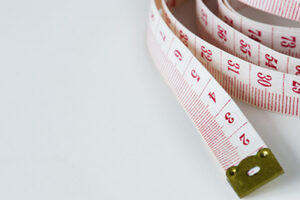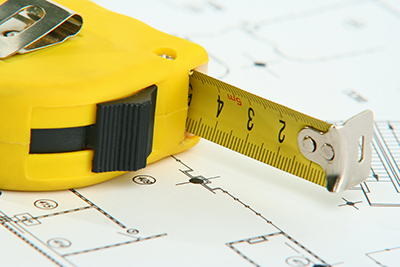What You Should Know About Measurement Types
It can be hard to keep track of which units to use when cooking or doing other tasks. Do you measure in cups, pounds, or kilograms? The answer is all three! Many people are confused about the differences between American measurements and metric measurements.
What is the difference between American measurements versus metric measurements? American measurements are based on volume while metric measurements are based on weight. It is important to know the difference between American measurements vs metric measurements because they are not interchangeable.
In this blog post, we will discuss the difference between these two measurement types and when it’s appropriate to use them.
What Are American Measurements?
American measurements are mainly based on volume. Some common American measurements you might see in a recipe include teaspoons, tablespoons, cups, and pints. This is the type of measurement that most people know best since they’ve been using it their whole life!

When Do You Use American Measurements?
You should primarily be using cups when measuring dry ingredients, such as flour and sugar. It can be dangerous if you try to measure something like water in a cup because it will overflow! This means that one quart of water weighs over two pounds so there’s no way that your scale would accurately read this weight unless it was very precise.
Use tablespoons or teaspoons for liquids since most people don’t have scales with small enough increments to weigh out milliliters (mL). Tsp is short for teaspoon while tbsp stands for tablespoon – both are abbreviations used by cooks all around the world who enjoy cooking meals at home.
The History of American Measurements
American measurements have been around since the 13th century. When American settlers first arrived in America, they decided to create a new measurement system because it would be easier for them to trade with each other if everyone used the same units of measure.
There were no standards back then and every state had its own set of weights and measures! The colonists didn’t want this problem so they made sure that everyone stayed on track by creating their unique system instead. This is why we still use American measurements today even though most countries now use metric measurements.
What Are Metric Measurements?
Metric measurements are a system of weights and measures that is used in most countries outside the United States. The main unit for this system is the gram (g), which represents one-thousandth of a kilogram or just less than thirty-three hundredths of an ounce.
Other common units to know include: milligrams (mg) – one-thousandth of a gram; kilograms (kg) – equivalent to 1000 grams; liters (L) – equivalent to 1000 mL; centimeters (cm)- equivalent to ten millimeters; meters(m)-equivalent to 100 cm or 1000 mm . You can see that with metric measurements, each digit to the right is ten times greater in value
When Do You Use Metric Measurements?
You should primarily be using metric measurements for cooking recipes that include ingredients such as oil, butter, and water. The reason for this is because you want to be able to accurately measure the weight of these items in grams rather than ounces or cups which would not give a precise enough measurement.
This means that if your recipe calls for 300 g of flour, then you should use a scale to weigh out exactly 300g instead of using an American cup since it can hold anywhere from 225-275g depending on how tightly packed it was!
If there’s one thing about metric measurements versus American measurements, it’s clear: they are very different. It may take some time to get used to but once you’ve mastered them both, baking will become even more enjoyable!
The History of Metric Measurements
Metric measurements have been around for years. This is due to the French Revolution, which took place between 1789 and 1799. The metric system was created by a group of scientists who wanted to do away with all other measurement systems because they were too complicated!
France eventually began using this new system in 1812, but only about forty countries now use it today since many people are used to making conversions from American weights and measures instead of just switching straight over.
We live in an ever-changing world where everything seems to be getting more advanced every day – even our units of measure!
In 1980, America decided that it would switch from American measurements (customary) to metric measurements within thirty years after seventy-two percent of people voted in favor.
However, we are still using American measurements today and the year 2022 is quickly approaching – will America decide to switch over or stick with what they know?
When to Use American Measurements vs Metric Measurements?
In, you should use whichever unit makes sense for the ingredient. For example, if your recipe calls for one cup of water then you should use a measuring cup to get an exact measurement since it’s hard to measure out milliliters with cups or tablespoons!
However, if your recipe instead called for 300 ml of water that would be equivalent to 0.33 American cups. This is where you could safely switch between units without much risk of messing up your measurements.
The same logic goes when using ounces vs metric grams – whichever makes more sense in terms of the weight/volume ratio should make up what type of unit you choose to use.

How to Convert American Measurements to Metric Measurements?
If you’re going to be cooking with recipes that are metrically based, then it’s important to know how much each metric measurement weighs.
Confused? Just remember: when converting from American units of volume into metric measurements of weight, your unit is equal to 30 ml = 100 g! When converting from American units of weight into metric measurements, your unit is equal to 15 g = 50 mL!
How Do I Convert From Metric Measurements to American Units?
When learning how to convert ingredients back and forth between metrics vs American measurements, keep in mind that there are several rules of thumb. For example, if the metric unit is less than one fluid ounce then you would divide it by 30 ml since a small amount of liquid fits into an American tablespoon.
Conversely, anything over a liter should expand to at least four cups but more likely five or six depending on how much extra space you need for whisking and stirring!
Benefits of Using American Measurements
There are several benefits of using American measurements versus metric. For one, the measurements used in American recipes are based on a familiar measuring system that everyone can understand.
Another benefit is that it’s easier to read and write out measures when using cups instead of milliliters. There aren’t as many numbers involved! Finally, this unit of measure will be more familiar so you won’t have to bother learning new rules or how they work.
Benefits of Using Metric Measurements
Metric measurements may seem daunting at first. However, once you get started with them it becomes easy to remember what each measurement corresponds to. For example, 100 ml = about three-quarters of a cup while 300 grams is about ten ounces. This makes converting ingredients into metric units much simpler than figuring out complex conversions between customary and metric units.
Benefits of Using Both Customary and Metric Measurements
If you use both customary and metric measurements in your cooking, then this would provide the best of both worlds! For example, if you’re baking a cake that calls for 400 grams (about 14 ounces) of flour but want to make it easier than dealing with fractions or decimals – just switch over to American cups instead.
This will allow you to easily follow one recipe without having to do any conversions. Measuring ingredients out by weight is much more accurate anyways! This gives folks options when it comes down to converting between measurement types. They can pick whichever unit makes sense depending on their needs.
Why Is There Confusion Between These Units?
There are several reasons why there is so much confusion surrounding American measurements vs metric. The main reason why people get confused when converting between units of measure has to do with the fact that both systems are used in different countries around the world!
For example, if you’re measuring out a recipe in America then it would be written using customary units while recipes from other parts of the world will use metric ones instead.
This can lead to several misconceptions about certain ingredients. They may have similar-sounding names but refer to completely separate measurements within these two measurement types.

Countries That Use American Measurements
The only country that still uses American measurements is Liberia and America itself, of course! However, people in Canada do use teaspoons while cooking but it’s not considered a part of the formal units of measure so you could say it’s more like “Canadian-style” than accurate metric measurement.
Countries That Use Metric Measurements
Almost every other nation around the world follows the official system for measuring ingredients with these countries being Australia, New Zealand, Myanmar (Burma), South Africa, and Vietnam just to name a few.
Many other European nations such as France and Italy have switched over entirely to using metric measurements. This is because they’re based on decimals instead of fractions. This makes them easier when dividing up ingredients by weight.
Are There Other Types of Measurement Systems?
Are there other types of measurement systems besides American measurements and metric measurement? The answer is yes, there are several! Other common systems that you may come across include:
- Fahrenheit Scale for Temperature Measurement
- British Imperial Measurements
- American Customary System for Weights and Measures
These are just a few of the many different types of measurement systems that exist both in America and around the world. Understanding various types of measurement systems will allow you to more accurately communicate with a local business in the United States and the world as a whole.
In Conclusion
Now you know how these systems work – have fun cooking with your choice of metric or American measures! Understanding how the different measurement systems work, along with their differences, will allow you to more accurately complete recipes and projects.


